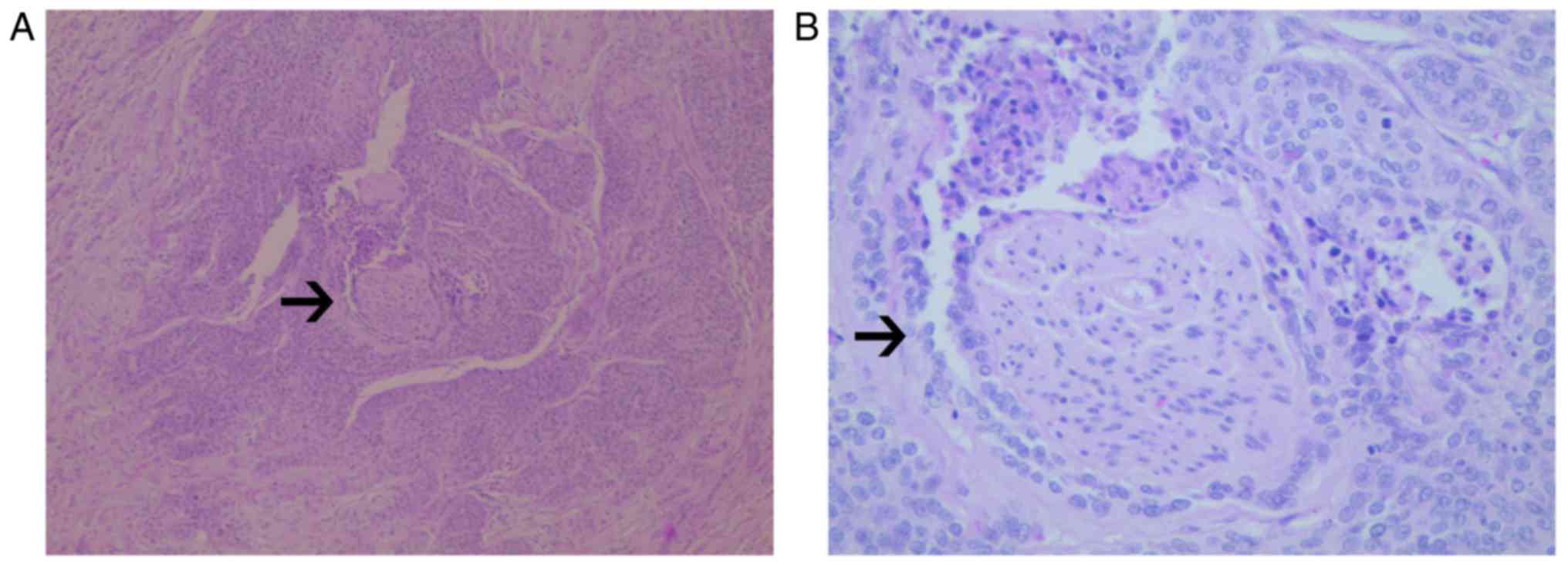Perineural invasion as a prognostic risk factor in patients with early cervical cancer
- Authors:
- Published online on: November 7, 2018 https://doi.org/10.3892/ol.2018.9674
- Pages: 1101-1107
-
Copyright: © Tang et al. This is an open access article distributed under the terms of Creative Commons Attribution License.
Metrics:
Total
Views: 0 (Spandidos Publications: | PMC Statistics:
)
Total PDF Downloads: 0 (Spandidos Publications: | PMC Statistics:
)
Abstract
The aim of the present study was to investigate the influence of perineural invasion (PNI) on the prognosis of patients with early cervical cancer (stages IA2‑IIA2). A retrospective analysis was conducted on 406 patients with early cervical cancer who underwent a radical hysterectomy and pelvic lymphadenectomy between January 2007 and December 2014 at the Affiliated Hospital of Jiangnan University (Wuxi, China). The clinicopathological data of the patients were obtained and follow‑up assessments were performed. A statistical analysis of the association between PNI and each index was performed, and the effect of PNI and the clinicopathological parameters on the prognosis of the patients was evaluated. Among the 406 cases with early cervical cancer, 41 cases were lost, with a follow‑up rate of 89.90%. Overall, 43 PNI‑positive patients were observed, with an occurrence rate of 10.59%. PNI‑positivity was associated with hypertension, lymph node metastasis, depth of cervical invasion, surgical margin and vascular invasion (P<0.05), but it was not associated with age, diabetes, clinical stage, histological type or tumor size (P>0.05). The overall survival (OS) and disease‑free survival (DFS) times of PNI‑positive patients were significantly lower compared with those of PNI‑negative patients. A multivariate regression analysis revealed that age, tumor size, clinical stage and PNI were independent risk factors for OS and DFS times. PNI is a poor prognostic factor for patients with early cervical cancer.














